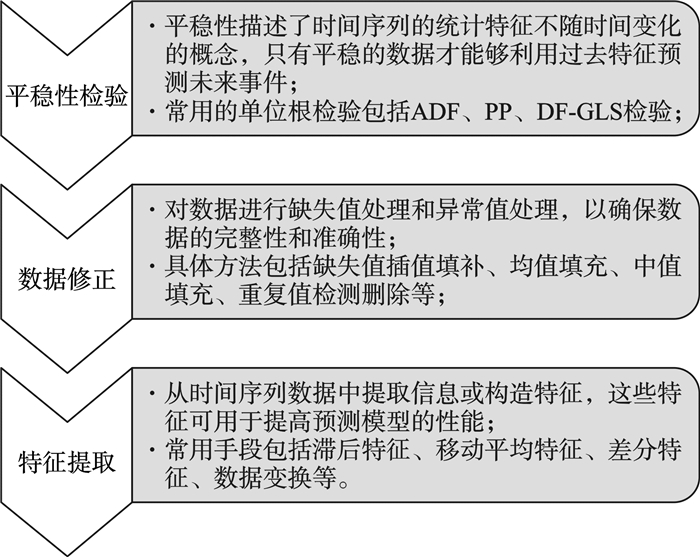脓毒症是一种宿主对感染的反应失调引起的危及生命的急性器官功能障碍综合征。保守估计,全球每年约有4 890万例脓毒症病例和1 100万例相关死亡病例。因脓毒症的高发病率、死亡率和疾病负担,WHO已将其列为主要公共健康问题。过去20年脓毒症定义不断发展,我们对脓毒症的本质有了持续且深入的理解,“拯救脓毒症运动”(SSC)也以国际指南不断推进脓毒症的管理规范,但脓毒症相关不良结局和疾病负担仍未见明显改善,尤其发展到脓毒性休克和多器官功能衰竭阶段,死亡率甚至高达50%,因此早期识别和积极干预就尤显重要。脓毒症急性起病和各种急性感染的症状往往将患者引向急诊,急诊科是脓毒症患者最可能发生第一次医疗接触的地方,而这种医疗接触甚至能够扩展到院前。和心梗、脑卒中、创伤一样,脓毒症这样一个“时间依赖性疾病”同样赋予了急诊更丰富的意义和更大的责任。脓毒症在急诊阶段的初步诊断、早期集束化干预、器官功能支持、风险分层、预后评估、并发症防治等均是我们关注的重点和研究的方向。25年前,美国急诊医生Rivers和他的同伴提出了脓毒症里程碑式的早期目标导向治疗,在此基础上演进出多层次集束化管理策略。5年前,我国急诊专家开创性提出了脓毒症早期预防与阻断的中国方案。相信随着对脓毒症认识和处理能力的不断提升,我国急诊必将在全球脓毒症研究和治疗中贡献更大力量。 (曹钰)
-
摘要: 脓毒症患者病情发展快、预后差,如何从有限的数据中快速发现患者的预后关键信息至关重要。然而,传统分析方法是基于某一时间点的静态数据,如某时间点的临床化验指标、生物标记物、器官评分等,对于患者数据变化的时间趋势缺少分析利用,限制了预测效能。时序数据是指某一时间窗内的数据动态改变,更能反映脓毒症状态下病情变化规律,并可利用较少的指标达到较高的评估效能。一段时间内的生理指标、心电图、超声影像甚至基因表达变化均可作为时序数据,其纳入数据类型多样、预测效能高,已成为未来的发展趋势。Abstract: The onset and deterioration of sepsis is usually fast and leads to a critical situation. It is important to predict the prognosis ahead of time based on limited data and information of patients. Conventional data is always cross-sectional and defined as static data. The static data represents the status at one specific time point, such as lab tests, biomarker parameters or clinical scores on the admission day. However, the change of data in a period is called dynamic data and is more efficient in the prediction of septic prognosis. As a key variable, the time might be added to many parameters, including electrocardiograph, ultrasound, and even gene expression. Time-series data has an advantage in tackling multimodal data and appears to be efficient in the prediction of prognosis, which is a potential tendency in the future.
-
Key words:
- time-series data /
- sepsis /
- static data /
- dynamic data /
- prediction capacity
-

-
[1] Oh W, Jayaraman P, Tandon P, et al. A novel method leveraging time series data to improve subphenotyping and application in critically ill patients with COVID-19[J]. Artif Intell Med, 2024, 148: 102750. doi: 10.1016/j.artmed.2023.102750
[2] Ning YL, Li WJ, Lu X, et al. Association between heart rate and mortality in patients with septic shock: an analysis revealed by time series data[J]. BMC Infect Dis, 2024, 24(1): 1088. doi: 10.1186/s12879-024-10004-z
[3] Wang WK, Chen I, Hershkovich L, et al. A systematic review of time series classification techniques used in biomedical applications[J]. Sensors, 2022, 22(20): 8016. doi: 10.3390/s22208016
[4] Harrison XA. A brief introduction to the analysis of time-series data from biologging studies[J]. Philos Trans R Soc Lond B Biol Sci, 2021, 376(1831): 20200227. doi: 10.1098/rstb.2020.0227
[5] Tomov L, Chervenkov L, Miteva DG, et al. Applications of time series analysis in epidemiology: literature review and our experience during COVID-19 pandemic[J]. World J Clin Cases, 2023, 11(29): 6974-6983. doi: 10.12998/wjcc.v11.i29.6974
[6] Bezbochina A, Stavinova E, Kovantsev A, et al. Enhancing predictability assessment: an overview and analysis of predictability measures for time series and network links[J]. Entropy, 2023, 25(11): 1542. doi: 10.3390/e25111542
[7] Bazo-Alvarez JC, Morris TP, Carpenter JR, et al. Current practices in missing data handling for interrupted time series studies performed on individual-level data: a scoping review in health research[J]. Clin Epidemiol, 2021, 13: 603-613. doi: 10.2147/CLEP.S314020
[8] Bock C, Moor M, Jutzeler CR, et al. Machine learning for biomedical time series classification: from shapelets to deep learning[J]. Methods Mol Biol, 2021, 2190: 33-71.
[9] Ort J, Hakvoort K, Neuloh G, et al. Foundations of time series analysis[J]. Acta Neurochir Suppl, 2022, 134: 215-220.
[10] Ao SI, Fayek H. Continual deep learning for time series modeling[J]. Sensors(Basel), 2023, 23(16): 7167.
[11] Li QW, Bedi T, Lehmann CU, et al. Evaluating short-term forecasting of COVID-19 cases among different epidemiological models under a Bayesian framework[J]. Gigascience, 2021, 10(2): giab009. doi: 10.1093/gigascience/giab009
[12] 贺斌, 高永彬. 基于非局部卷积和卷积注意力模块的眩晕眼震诊断方法[J]. 中国医学物理学杂志, 2024, 41(5): 571-578.
[13] Grant AD, Upton TJ, Terry JR, et al. Analysis of wearable time series data in endocrine and metabolic research[J]. Curr Opin Endocr Metab Res, 2022, 25: 100380. doi: 10.1016/j.coemr.2022.100380
[14] Shao J, Liu ZQ, Li SY, et al. Continuous glucose monitoring time series data analysis: a time series analysis package for continuous glucose monitoring data[J]. J Comput Biol, 2023, 30(1): 112-116. doi: 10.1089/cmb.2022.0100
[15] 朱人杰, 叶春明. 体检指标健康预警的灰色-时序组合模型[J]. 上海理工大学学报, 2023, 45(3): 271-280.
[16] 徐永红, 王金萍, 马佳越. 基于时序心脏模型样本均衡方法的心律失常分类[J]. 中国生物医学工程学报, 2022, 41(3): 301-309.
[17] 黄瑶, 王晓霞, 蒋富杰, 等. 基于纵向时间影像的深度学习在乳腺癌新辅助化疗疗效预测中的研究进展[J]. 磁共振成像, 2023, 14(3): 175-178, 183.
[18] 范艺晶, 罗涛, 李剑峰, 等. 基于脑电时-空特征的深度学习失眠障碍检测算法[J]. 北京生物医学工程, 2022, 41(2): 161-166.
[19] Campione SA, Kelliher CM, Orlando DA, et al. Alignment of synchronized time-series data using the characterizing loss of cell cycle synchrony model for cross-experiment comparisons[J]. J Vis Exp, 2023(196).
[20] 操利超, 巴颖, 张核子. 单细胞测序方法研究进展[J]. 生物信息学, 2022, 20(2): 91-99.
[21] Yuan ZN, Xue YJ, Wang HJ, et al. A nomogram for predicting hospital mortality of critical ill patients with sepsis and cancer: a retrospective cohort study based on MIMIC-IV and eICU-CRD[J]. BMJ Open, 2023, 13(9): e072112.
[22] Gupta A, Liu TM, Crick C. Utilizing time series data embedded in electronic health records to develop continuous mortality risk prediction models using hidden Markov models: a sepsis case study[J]. Stat Methods Med Res, 2020, 29(11): 3409-3423.
[23] Ceres KM, Schukken YH, Gröhn YT. Characterizing infectious disease progression through discrete states using hidden Markov models[J]. PLoS One, 2020, 15(11): e0242683.
[24] Soong C, Bell CM, Blackstien-Hirsch P. 'Show me the data!'Using time series to display performance data for hospital boards[J]. BMJ Qual Saf, 2023, 32(2): 69-72.
[25] Tang Y, Zhang Y, Li JX. A time series driven model for early sepsis prediction based on transformer module[J]. BMC Med Res Methodol, 2024, 24(1): 23.
[26] Nakanishi T, Tsuji T, Tamura T, et al. Development and validation of a prediction model for acute hypotensive events in intensive care unit patients[J]. J Clin Med, 2024, 13(10): 2786.
[27] Scherpf M, Gräßer F, Malberg H, et al. Predicting sepsis with a recurrent neural network using the MIMIC Ⅲ database[J]. Comput Biol Med, 2019, 113: 103395.
[28] Hao CX, Hao R, Zhao HY, et al. Identification and validation of sepsis subphenotypes using time-series data[J]. Heliyon, 2024, 10(7): e28520.
[29] Junaid M, Ali S, Eid F, et al. Explainable machine learning models based on multimodal time-series data for the early detection of Parkinson's disease[J]. Comput Methods Programs Biomed, 2023, 234: 107495.
[30] Belay MA, Blakseth SS, Rasheed A, et al. Unsupervised anomaly detection for IoT-based multivariate time series: existing solutions, performance analysis and future directions[J]. Sensors, 2023, 23(5): 2844.
-





 下载:
下载: